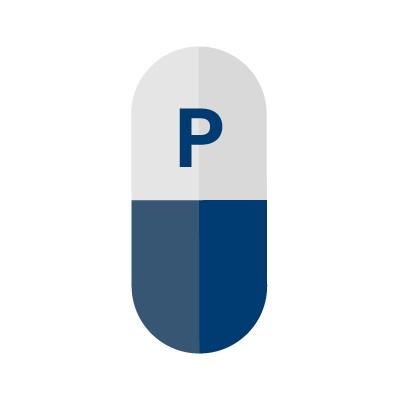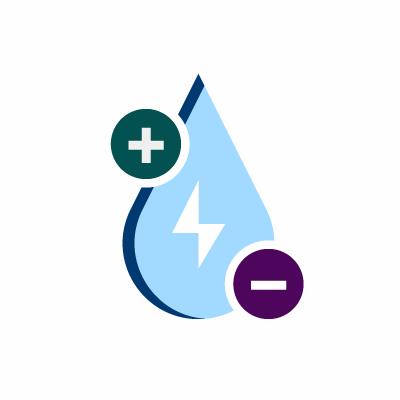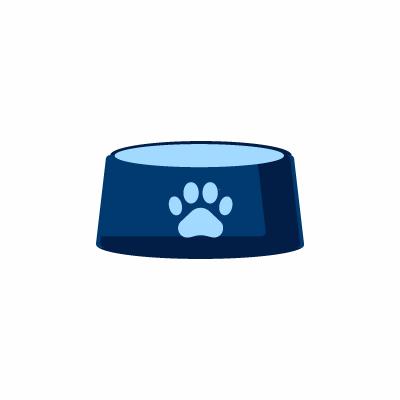Diets for cats with chronic kidney disease
The kidneys have several important functions, such as:
- Removing waste products from the blood and excreting them in the urine
- Regulating blood levels of minerals (phosphorus, calcium) and electrolytes (potassium, sodium)
- Production of hormones (for instance for control of blood pressure)
Chronic kidney disease (CKD) is the most prevalent type of kidney disease which is mainly seen in elderly cats. It is a progressive disease with irreversible deterioration of kidney function. The kidneys of cats with CKD lose their ability to concentrate urine, to remove waste products from the blood and to regulate blood levels of minerals and electrolytes. Unfortunately, damaged kidney tissue cannot be repaired, but a special kidney diet can help to slow the progression of the disease, alleviate clinical symptoms, and improve the cat’s quality of life. Studies have shown that cats with CKD which are switched from their normal maintenance diet to a kidney diet lived about 1 year longer than cats with CKD which remain on their normal diet.
Diet plays a vital role in managing CKD in cats
Dietary management can help slow the progression of the disease, alleviate symptoms, and improve the cat’s quality-of-life.
The most important features of a kidney diet are the reduced levels of phosphorus and protein
Phosphorus restriction
Kidneys of cats with CKD have difficulties excreting excess phosphorus, resulting in a rise of the phosphorus level in the blood, which can cause further damage to the kidneys. Studies have shown that reduction of the dietary phosphorus level is very important for the management of kidney disease, since it helps in slowing down further decline in kidney function.

Protein Restriction
In cats with CKD, the kidneys may struggle to eliminate the waste products (urea and other toxins) coming from protein metabolism. This can lead to a build-up of toxins in the body which can cause nausea, vomiting, reduced appetite and reduced food intake. By reducing the amount of protein in the diet, less waste products will be produced and the level of waste products in the blood will reduce. This helps to reduce the feeling of nausea and vomiting, and will make the cat feel better.
When reducing the amount of protein in the diet, it is important that the protein is of high quality, to assure that the cat is still getting all the protein and amino acids that it needs.

Sodium Regulation
Cats with CKD can develop hypertension (high blood pressure). Restricting sodium in the diet may help to maintain normal blood pressure.

Electrolyte and acid-base balance
Cats with CKD can have problems to regulate the balance of acids and electrolytes in their body. Kidney diets can be specially formulated to compensate for these problems to help maintain health in cats with CKD.

Increased Water Consumption
Due to a reduced ability to concentrate urine, cats with CKD produce large amounts of dilute urine. The increased water loss makes them thirsty and they will drink more. Encouraging increased water intake is essential for cats with kidney disease, as dehydration can worsen the condition. Providing wet or canned food can help increase overall water consumption, which helps to flush toxins from the body and prevent dehydration.

Omega-3 fatty acids provide extra benefit to a kidney diet
Omega-3 fatty acids, such as those found in fish oils, provide the body with building blocks for the body’s natural production of anti-inflammatory mediators and may thereby help to reduce inflammation in the kidneys. Including these omega-3 fatty acids in a kidney diet can help cats with kidney disease. A study in cats with CKD showed that cats, which were fed a kidney diet with a very high level of omega-3 fatty acids from fish, survived considerably longer than cats fed kidney diets without or with much lower levels of omega-3 fatty acids.
Monitor food intake and body weight in cats with CKD
Cats with CKD can have a reduced appetite and may lose weight. It is therefore very important to monitor how much food the cat eats, how its body weight develops, and whether the cat has an ideal body weight and sufficient muscle mass. By measuring exactly how much the cat eats, it can be checked if it eats enough to meet its nutrient and energy need.
Renal diets can help to reduce symptoms of kidney disease, such as nausea and vomiting, and can slow progression of renal failure. It is therefore recommended to introduce a kidney diet at an early stage of CKD. Kidney diets should be introduced very gradually to help cats to accept the new diet. If the cat does not voluntarily eat enough and starts to lose weight then appetite-stimulating drugs should be used. If that doesn’t work tube-feeding can be used.
The dietary needs of each cat may vary depending on the severity of the kidney disease, as well as any other medical condition it may have. Therefore, it is best to consult with a veterinarian who can assess the cat's condition and recommend an appropriate diet plan tailored to its individual needs. Regular veterinary check-ups and monitoring are also crucial to adjust the diet as the disease progresses.
